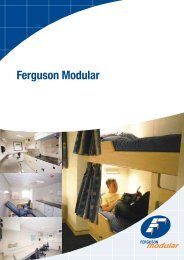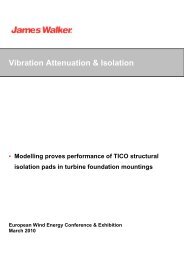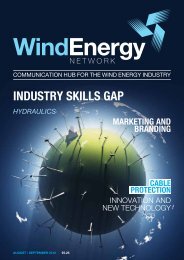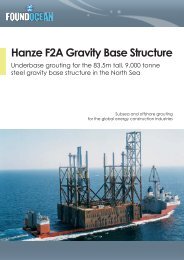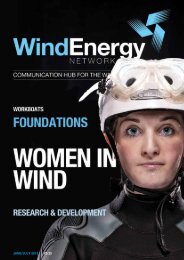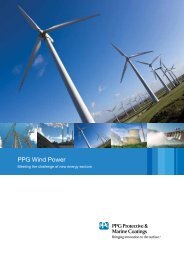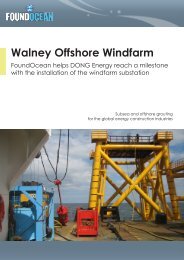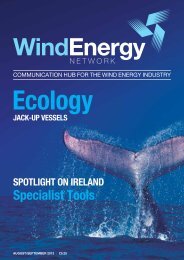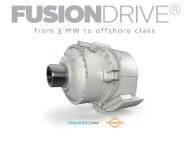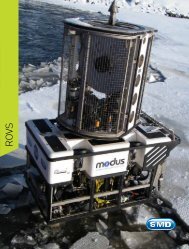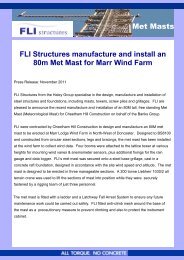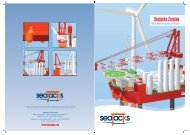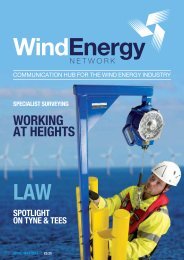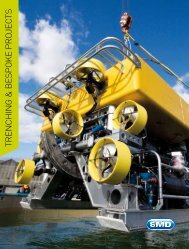UNEXPLODED ORDNANCE - Wind Energy Network
UNEXPLODED ORDNANCE - Wind Energy Network
UNEXPLODED ORDNANCE - Wind Energy Network
Create successful ePaper yourself
Turn your PDF publications into a flip-book with our unique Google optimized e-Paper software.
Sponsors of GEARBOX V DD<br />
<strong>Wind</strong><br />
Turbines<br />
Go Back to<br />
Basics<br />
Renewable energy generation<br />
simplifies its technology, as wind<br />
installations begin to reject gearboxes<br />
in favour of the good-old direct drive<br />
turbines, states a new report by<br />
energy experts GlobalData.<br />
Advantages and drawbacks<br />
The new report discusses the advantages<br />
and problems associated with advanced<br />
technology in the wind power industry.<br />
A gearbox allows the generator’s<br />
internal shaft to spin 50–250 times for<br />
each rotation of the turbine blades, and<br />
provides advantages including low noise<br />
levels and high efficiency. However,<br />
drawbacks include a high level of<br />
maintenance and low reliability.<br />
Expectations<br />
The global wind turbine gearbox market<br />
is dominated by Winergy and China High<br />
Speed Transmission Equipment, who<br />
combined accounted for a 52% share of<br />
global wind turbine gearbox production<br />
in 2011. The total amount of gearbox<br />
units installed in the global wind market<br />
increased from 9,075 in 2006 to 21,192<br />
in 2011 at a Compound Annual Growth<br />
Rate (CAGR) of 19%, but an increase<br />
in average turbine size and growing<br />
prominence of direct drive systems is<br />
expected to result in a decline in turbine<br />
installations with gearboxes during the<br />
forecast period, from present levels to<br />
12,662 by 2020.<br />
Direct drive technology<br />
In contrast, direct drive technology<br />
does not use a gearbox, offering slow<br />
movement of all the parts of the wind<br />
turbine systems and therefore reduced<br />
wear and tear of the system and superior<br />
reliability. Direct drive turbines have been<br />
in the wind power market for a long time,<br />
but have gained increasing popularity<br />
in recent years due to the low reliability<br />
and high refurbishment costs of gearbox<br />
components.<br />
Enercon GmbH of Germany and Xinjiang<br />
Gold<strong>Wind</strong> Science and Technology<br />
Company Limited of China are major<br />
companies manufacturing direct drive<br />
turbines, and both are perfecting their<br />
industry offerings. Enercon’s annular<br />
multiple poles generator reduces the<br />
number of moving components used,<br />
while Xinjiang’s Gold<strong>Wind</strong> uses permanent<br />
magnet direct drive technology.<br />
This increases reliability substantially, and<br />
reduces maintenance costs and time,<br />
increasing production time and therefore<br />
providing improved returns. However, the<br />
cost of permanent magnet generators<br />
depends upon the cost of rare earth<br />
materials such as Neodymium.<br />
The share of global wind turbine<br />
installations accounted for by direct drive<br />
turbines has grown from around 18% in<br />
2006 to 22% in 2011, and is expected<br />
to increase to 29% by 2020, with wind<br />
turbine manufacturers such as Siemens<br />
and GE shifting from gearbox turbines to<br />
permanent magnet direct drive turbines.<br />
GlobalData<br />
www.globaldata.com<br />
46<br />
www.windenergynetwork.co.uk



